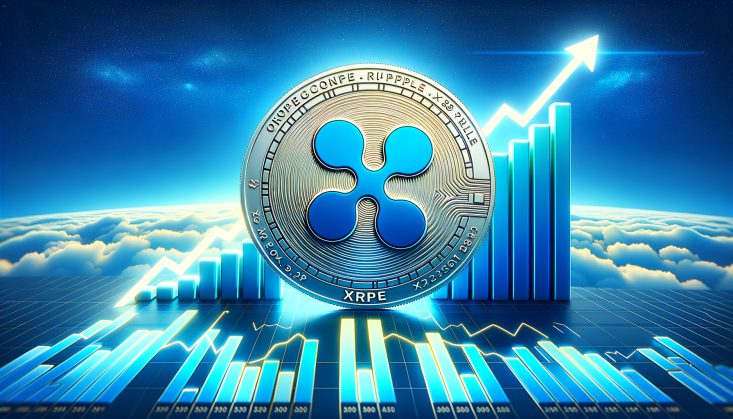
With the surge of interest in natural muscle-building supplements, two names dominate the conversation: Ecdysterone and Turkesterone. Both are plant-derived ecdysteroids—steroid-like compounds that aren’t anabolic-androgenic steroids (AAS), yet promise similar benefits like increased muscle growth, enhanced recovery, and improved performance.
As athletes and biohackers search for safer, legal alternatives to steroids and SARMs, these two compounds have become top contenders in the natural enhancement world. But which one actually delivers better results? Is one more bioavailable, better studied, or safer?
In this article, we’ll break down the science, compare benefits and mechanisms, and help you decide whether Ecdysterone or Turkesterone is the right choice for your muscle-building stack.
Let’s start with a deep dive into what each of these compounds is—and how they work.
What Is Ecdysterone?
Ecdysterone, also known as 20-Hydroxyecdysone, is a naturally occurring ecdysteroid found in plants like Rhaponticum carthamoides (Leuzea) and spinach. Originally studied for its role in insect development, it has recently gained traction in human performance enhancement due to its anabolic-like effects without hormonal disruption.
Researchers have found that ecdysterone may stimulate protein synthesis through the PI3K/Akt signaling pathway, which is also triggered by resistance training and anabolic steroids—yet it does so without binding to androgen receptors or suppressing natural testosterone.
“Ecdysterone significantly increases muscle mass and physical performance in humans without androgenic side effects.”
— Isenmann et al., Archives of Toxicology
It’s available in supplement form as a capsule or powder and is often marketed for natural muscle growth, body recomposition, and recovery acceleration. Because it doesn’t affect the endocrine system directly, it’s not classified as a steroid under most regulations.
Now let’s look at its popular counterpart: turkesterone.
What Is Turkesterone?
Turkesterone is a naturally occurring ecdysteroid derived primarily from the plant Ajuga turkestanica, a traditional medicinal herb native to Central Asia. Like ecdysterone, it belongs to the broader ecdysteroid family but is considered a more concentrated and potentially more potent analog.
What makes turkesterone unique is its structural variation at the 11-alpha hydroxyl group, which is believed to enhance its anabolic potential while minimizing androgenic effects. Turkesterone does not bind to androgen receptors, making it non-hormonal and non-suppressive, similar to ecdysterone.
Although direct human trials on turkesterone are limited, it is frequently cited in forums, anecdotal reports, and early-stage research as a promising compound for:
→ Supporting lean muscle growth
→ Enhancing recovery
→ Improving strength and workload tolerance
“Turkesterone, as an ecdysteroid, appears to have anabolic-like effects without hormonal impact, making it attractive for natural lifters.”
— Wilborn et al., Journal of the International Society of Sports Nutrition
It is often stacked with other natural performance enhancers and is typically dosed between 500–1000 mg daily depending on the extract potency (e.g., 10% vs. 20%).
With both ecdysterone and turkesterone showing potential in the realm of muscle building, it’s crucial to understand how they compare side by side. Let’s break it down.
Ecdysterone vs Turkesterone: Key Differences
While both ecdysterone and turkesterone are part of the ecdysteroid family and offer similar anabolic effects, they differ significantly in source, structure, and research backing. Here’s how they compare:
| Feature | Ecdysterone | Turkesterone |
|---|---|---|
| Source | Found in spinach, quinoa, Cyanotis vaga | Derived from Ajuga turkestanica |
| Molecular Structure | 20-hydroxyecdysone | Modified ecdysteroid with 11α-hydroxyl substitution |
| Mechanism of Action | Stimulates protein synthesis via ecdysone receptor pathways | Believed to enhance mTOR activation and leucine uptake |
| Androgenic Activity | Non-androgenic | Non-androgenic |
| Anabolic Potential | Clinically shown to improve lean muscle mass and strength | Supported by anecdotal reports and animal studies |
| Bioavailability | Moderate; enhanced by liposomal or nanoparticle delivery | May be lower; purity of extract varies widely |
| WADA Status | Not currently banned by WADA | Not currently banned by WADA |
| Side Effects | Minimal; no major adverse events in human trials | Minimal; mostly anecdotal safety reports |
“20-Hydroxyecdysone [ecdysterone] significantly increased lean muscle mass and strength in a double-blind, placebo-controlled study.”
— Isenmann, Archives of Toxicology
If you’re looking for a well-researched, clinically supported natural anabolic, ecdysterone is the superior option. If you’re open to experimenting with promising but less-researched compounds, turkesterone has strong anecdotal backing—especially among lifters seeking strength without water retention or suppression.
Both compounds are natural ecdysteroids, but they differ in clinical validation, consistency of effects, and scientific understanding. Here’s a breakdown of the most notable performance and physique-related benefits:
Ecdysterone Benefits
→ Clinically Supported Lean Muscle Gains
A double-blind, placebo-controlled human study found that ecdysterone supplementation led to significantly greater increases in lean mass and strength compared to placebo and even testosterone analogs.
“The anabolic potency of ecdysterone was comparable to, or exceeded, some anabolic steroids in vitro.”
— Isenmann, Archives of Toxicology
→ Enhanced Endurance and VO₂ Max
Ecdysterone improves mitochondrial function and oxygen delivery, supporting endurance capacity.
“20-Hydroxyecdysone increased VO₂ max and reduced fatigue markers in preclinical models.”
— Gorelick-Feldman, Biochemical Pharmacology
→ Stimulates Protein Synthesis
Ecdysterone activates translational factors like eIF-4E and eIF-2B and boosts the PI3K/Akt pathway—leading to faster muscle repair and growth.
“20E was shown to stimulate protein synthesis at the translational level, independent of androgen receptor activation.”
— Parr, Molecular Nutrition & Food Research
Turkesterone Benefits
→ Non-Hormonal Anabolic Support
Turkesterone is an ecdysteroid that does not bind to androgen receptors, making it an attractive option for those avoiding hormonal disruption. However, clinical studies in humans are currently lacking.
→ Muscle Recovery and Strength Potential
Anecdotal evidence and rodent studies suggest turkesterone may support recovery and strength increases, though findings are inconsistent and not well-validated in humans.
→ Adaptogen-Like Effects
Turkesterone is thought to modulate stress response through hypothalamic signaling, possibly aiding in cortisol regulation, though this is speculative and not well studied in peer-reviewed human trials.
| Feature / Category | Ecdysterone | Turkesterone |
|---|---|---|
| Source | Found in spinach, quinoa, and Cyanotis arachnoidea | Extracted from Ajuga turkestanica |
| Scientific Research | Backed by multiple human and animal studies; shown to improve strength, hypertrophy, and performance | Limited human research; mostly supported by anecdotal reports and early animal studies |
| Mechanism of Action | Activates the PI3K/Akt pathway to enhance protein synthesis without binding to androgen receptors | Theorized to work via estrogen receptor beta modulation but lacks mechanistic studies |
| Muscle Building | ✅ Clinically shown to increase lean muscle mass and strength | ⚠️ Anecdotal reports of lean gains, but lacking consistent scientific validation |
| Fat Loss & Recomp | Mild recomposition effects noted in studies | Anecdotally reported, but not validated |
| Endurance & Recovery | Improves endurance performance and recovery capacity (Isenmann, Front Pharmacol) | Some users report recovery benefits; no peer-reviewed validation |
| Side Effects | No known hormonal side effects; non-androgenic, does not suppress testosterone | Also non-hormonal, generally well tolerated |
| Legal Status | Legal, classified as a supplement; WADA monitoring status only | Legal and sold as a supplement |
| Best For | → Natural athletes seeking clinically supported performance gains→ Those avoiding hormonal suppression | → Users interested in non-hormonal anabolic support→ Early adopters and experimental users |
| Swolverine Internal Link | Ecdysterone Guide | Turkesterone Guide |
Mechanism of Action: How Ecdysterone and Turkesterone Work
Despite being classified as “natural anabolics,” Ecdysterone and Turkesterone operate via entirely different cellular pathways from traditional anabolic steroids or SARMs.
→ Ecdysterone
Ecdysterone is a naturally occurring ecdysteroid hormone found in plants and insects. It’s been shown to enhance muscle growth through the PI3K/Akt signaling pathway, a critical mechanism for stimulating muscle protein synthesis — the same pathway activated by insulin and IGF-1.
“Ecdysterone significantly increased muscle fiber size and strength in humans without androgenic side effects, likely through PI3K/Akt activation,”
— Isenmann et al., Frontiers in Pharmacology
Notably, ecdysterone does not bind to androgen receptors, meaning it does not carry the same risks of testosterone suppression or masculinizing side effects as anabolic steroids.
→ Turkesterone
Turkesterone, although structurally similar to ecdysterone, is less studied and does not yet have confirmed mechanisms via human clinical trials. Most claims about turkesterone’s mode of action are based on molecular modeling and early-stage research.
It is theorized to work by:
-
Enhancing protein synthesis via estrogen receptor beta activation
-
Supporting mitochondrial health and adaptation
-
Promoting lean mass retention during calorie restriction
However, no definitive peer-reviewed research confirms this pathway in humans.
In summary:
-
→ Ecdysterone has a proven, non-hormonal anabolic mechanism
-
→ Turkesterone remains theoretical, with anecdotal support but less biological clarity
Which Is More Effective for Muscle Growth and Performance?
When comparing Ecdysterone and Turkesterone side by side, the evidence leans heavily in favor of Ecdysterone for real-world performance enhancement — primarily because it’s backed by human clinical trials.
→ Ecdysterone for Muscle Growth
A landmark study published in Frontiers in Pharmacology tested ecdysterone in strength-trained men and found significant gains in lean muscle mass and strength over 10 weeks — with no adverse hormonal effects.
“Subjects in the ecdysterone group gained significantly more muscle mass than placebo, with an average increase of 1.6 kg in lean mass and enhanced one-rep max in bench press,”
— Isenmann et al., Frontiers in Pharmacology
Athletes also report faster recovery and improved training volume tolerance, especially when stacking with other natural ergogenics like Kre-Alkalyn® or BCAAs.
→ Turkesterone: Unproven but Promising?
Turkesterone exploded in popularity thanks to influencers and anecdotal hype — particularly for its “natty anabolic” label. But as of now, there are no human studies demonstrating significant gains in muscle mass, strength, or performance.
Its popularity is rooted in:
-
Bro science and social media buzz
-
Lack of known side effects
-
Reports of better pumps and recovery (mostly subjective)
That said, without clinical validation, it’s hard to compare turkesterone to ecdysterone on an evidence-based scale.
Key Takeaway:
→ Ecdysterone is backed by clinical research showing increased lean mass
→ Turkesterone remains speculative, with anecdotal claims and hype but no data
Which One Is Safer?
When comparing the safety profiles of Ecdysterone and Turkesterone, both compounds are often promoted as natural, non-hormonal alternatives to anabolic steroids — but only one has undergone actual safety testing in humans.
→ Ecdysterone Safety
Ecdysterone has been studied in several human trials, and none have reported hepatotoxicity, hormonal suppression, or organ stress. In fact, even when subjects used doses up to 200 mg per day, the results showed no negative impact on testosterone, liver enzymes, or kidney markers.
“Ecdysterone does not negatively affect endogenous hormone levels or organ systems, making it a promising agent for performance enhancement with minimal risk.”
— Isenmann et al., Frontiers in Pharmacology
Moreover, WADA (the World Anti-Doping Agency) added ecdysterone to its monitoring program, meaning it’s under review due to its performance-enhancing potential — not because of adverse effects.
→ Turkesterone Safety
Turkesterone has no documented human trials. Most of what we know comes from:
Despite the lack of data, users often claim that Turkesterone is side-effect free, though some report:
-
Digestive upset
-
Mild headaches
-
No noticeable results
The absence of evidence doesn’t confirm its safety — it just reflects the lack of proper testing.
Key Takeaway:
→ Ecdysterone has published human data showing no hormonal disruption or organ toxicity
→ Turkesterone lacks clinical testing, making its safety profile unknown
Do You Need Post Cycle Therapy (PCT)?
One of the biggest reasons natural anabolic alternatives like Ecdysterone and Turkesterone are gaining popularity is the potential to avoid Post Cycle Therapy (PCT) — a mandatory step for recovering natural testosterone after anabolic steroid or SARM use.
So, do you need PCT with these two?
→ Ecdysterone and PCT
No clinical evidence suggests that Ecdysterone suppresses natural testosterone. Studies involving up to 200 mg/day for several weeks have shown no reduction in luteinizing hormone (LH), follicle-stimulating hormone (FSH), or free/bound testosterone.
“In contrast to anabolic androgenic steroids, ecdysteroids such as 20-hydroxyecdysone do not show negative feedback on the hypothalamic–pituitary–gonadal axis.”
— Gorelick-Feldman et al., American Journal of Translational Research
Because of this, most users don’t require PCT after a standard Ecdysterone cycle. However, some athletes opt to use testosterone-supporting supplements (like DHEA or ZMT™) post-cycle just to maintain momentum.
→ Turkesterone and PCT
Similar logic applies. There’s no evidence Turkesterone impacts endogenous testosterone — but there’s also no human data at all. Most users report no need for PCT, especially if doses remain within 500–750 mg/day and cycle lengths are under 8 weeks.
Still, due to the variability in extracts, mild hormone support (ZMT™, DHEA, or Tongkat Ali) might help with energy and recovery post-cycle.
Summary:
→ Ecdysterone: No PCT required
→ Turkesterone: PCT generally not needed, but light support may help
Legal Status and Supplement Regulation
Both Ecdysterone and Turkesterone occupy a unique position in the world of performance-enhancing compounds. They’re not anabolic steroids, and they’re not SARMs or controlled substances. But that doesn’t mean they’re completely unregulated either.
→ Ecdysterone: Legal, But On WADA’s Radar
Ecdysterone is currently legal to purchase and use in the United States, Europe, and most other countries. It’s sold in capsules, powders, and complex blends by numerous supplement brands.
However, it caught the attention of anti-doping authorities:
“Ecdysterone shows a similar anabolic potency to anabolic steroids… Therefore, ecdysterone should be included in the list of substances prohibited in sport.”
— Parr et al., Archives of Toxicology
As of 2025, Ecdysterone is not on the WADA Prohibited List, but it is listed under their Monitoring Program for substances with potential for misuse.
→ Turkesterone: Less Scrutiny, Still Legal
Turkesterone is also legal and unscheduled in the U.S. and most other countries. It doesn’t yet have the same volume of human data or WADA attention that Ecdysterone does, largely due to its limited clinical research.
However, as popularity surges, regulators may begin to assess it more closely — especially if mislabeling or exaggerated anabolic claims continue in the supplement space.
→ Supplement Quality Matters
Since neither compound is regulated like pharmaceuticals, purity and standardization vary wildly. Many supplements claiming to contain Turkesterone or Ecdysterone either contain:
→ Low actual active ingredient
→ Incorrect plant species (e.g., Ajuga reptans instead of Ajuga turkestanica)
→ Or are spiked with actual steroids/SARMs (per some lab tests)
That’s why it’s critical to choose third-party tested products with ingredient transparency, clinical dosing, and no proprietary blends.
Conclusion: Which One Should You Choose?
When comparing Ecdysterone vs Turkesterone, both stand out as natural anabolic agents with unique appeal—but they serve slightly different purposes depending on your goals, training style, and expectations.
→ Choose Ecdysterone if:
-
You want stronger human clinical data supporting anabolic effects
-
You’re looking for improved endurance and muscle protein synthesis
-
You plan to stack with other peptides or SARMs for performance
-
You’re okay with WADA monitoring if you’re a tested athlete
💡 Learn more about the science behind it in our article:
What Is Ecdysterone? Natural Anabolic Benefits, Mechanism, and Studies
→ Choose Turkesterone if:
-
You’re seeking a steroid-like effect without hormonal suppression
-
You prefer plant-based or adaptogenic supplements
-
You’re newer to performance supplementation and want mild, safe gains
-
You want a lower-risk alternative with less regulatory scrutiny
💡 Explore the full breakdown here:
What Is Turkesterone? Natural Muscle-Building Benefits and How It Works
Both compounds can support lean muscle growth, recovery, and strength, but Ecdysterone has the clinical edge, while Turkesterone has the hype and adaptogenic versatility. For many users, the ideal route may be trying both independently or incorporating them into a broader stack with DHEA, Creatine, or BPC-157.
Whichever you choose, always look for purity, transparency, and clinical dosing—and remember that no supplement replaces consistent training, sleep, and nutrition.





